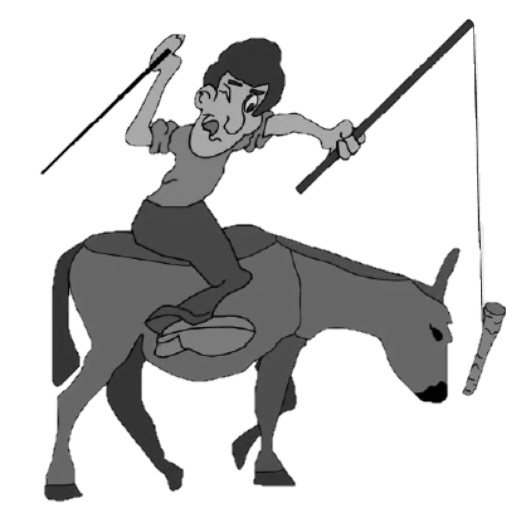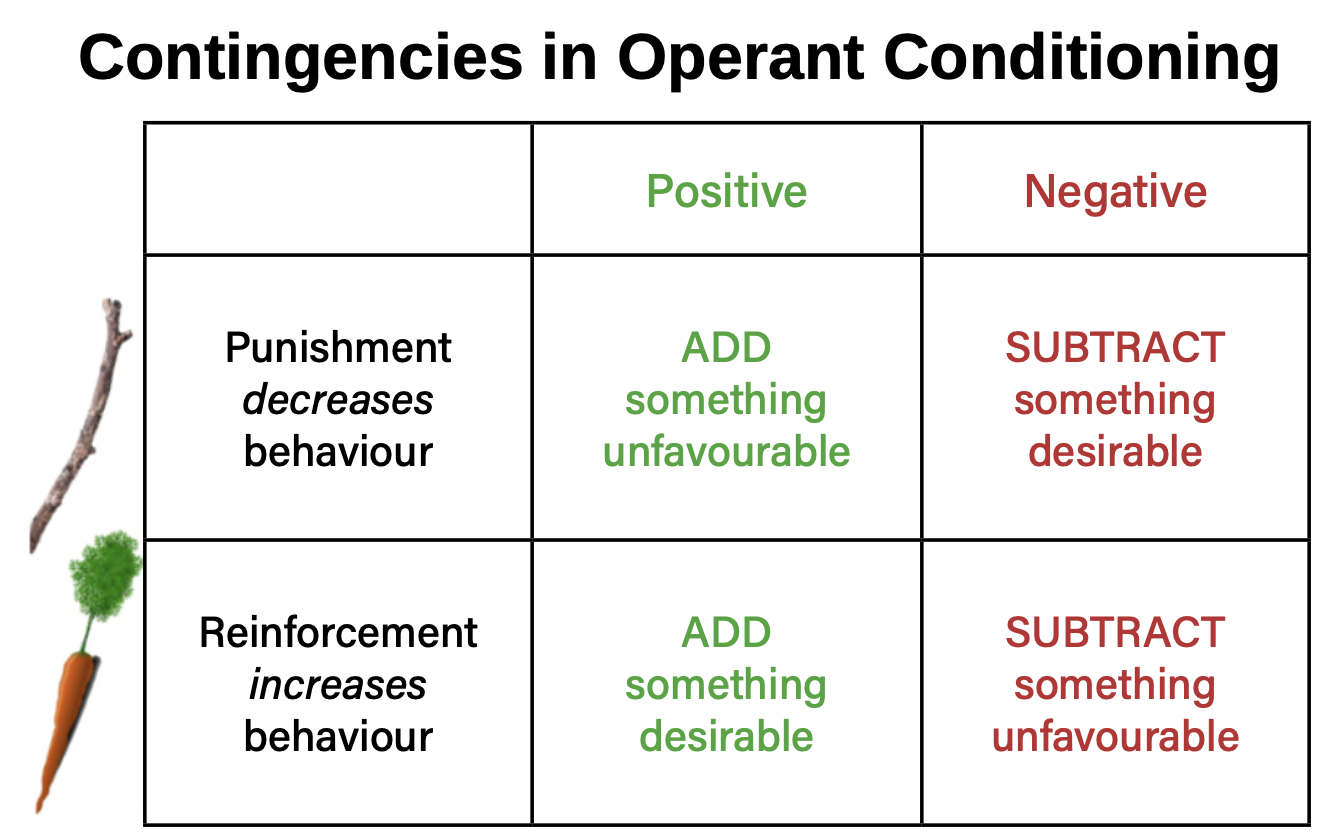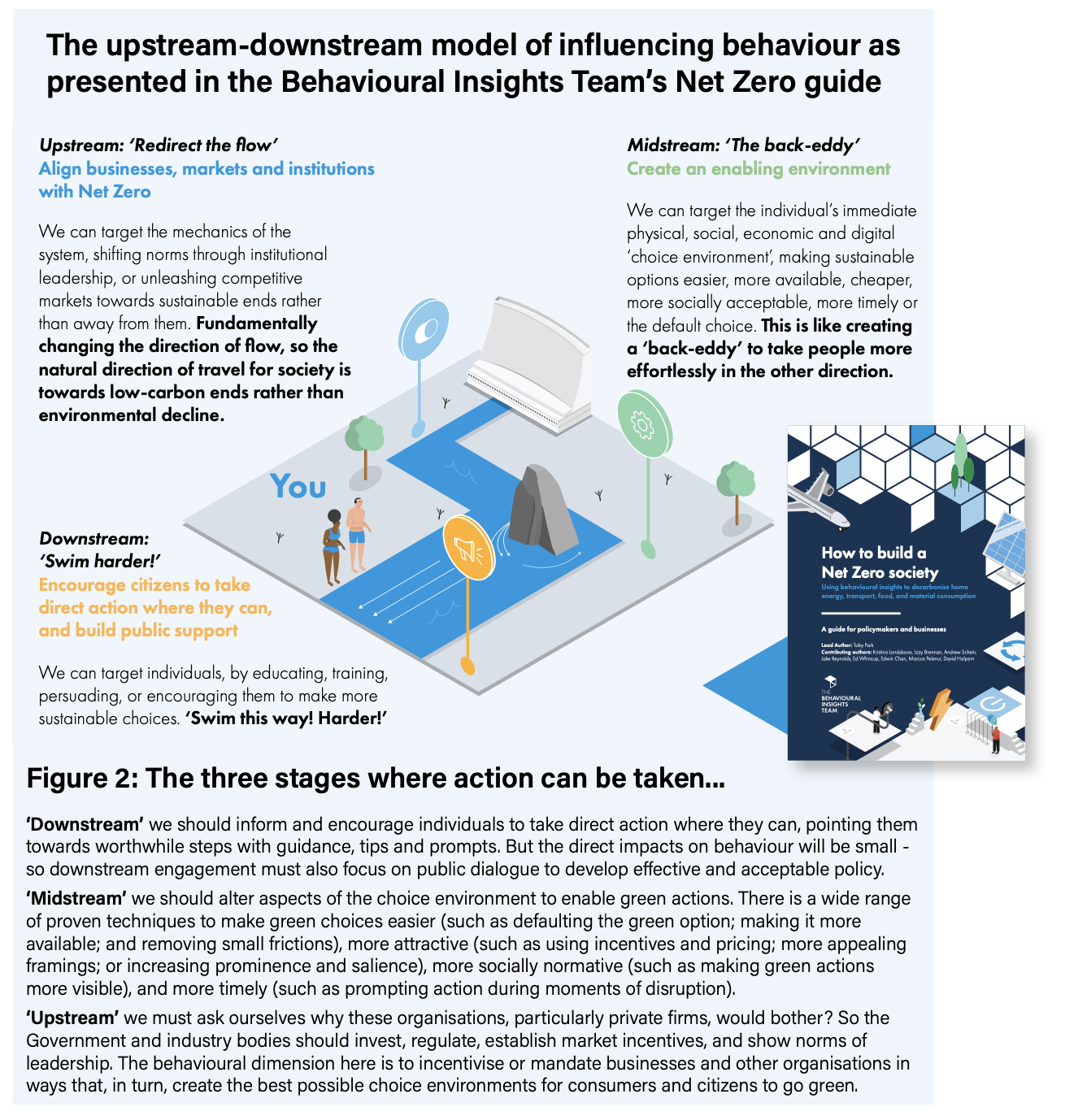TAPAS.network | 13 November 2023 | Commentary | Pete Dyson
Beyond Carrots & Sticks – why it’s time to replace this unhelpful transport policy metaphor

It is said that language can drive us apart, and that’s the case with the concept of deploying carrots and sticks, widely, but mistakenly, adopted by the transport planning and policy fraternity, believes co-author of ‘Transport for Humans’, doctoral researcher at University of Bath and former behavioural scientist at Department for Transport. He points to its unwanted messaging implications in presenting the case for change to decision-makers and transport users, and proposes there are better ways to discuss travel behaviour change
THE TERM ‘CARROTS AND STICKS’ first appeared in a relatively obscure 1849 narrative about an expedition to the Dead Sea l by Edward P. Montague. Midway through the book, a character recalls seeing a cartoon of a donkey race illustrating how persuasion is better than force. “Riders brought their donkeys to the starting line, one having a bunch of carrots tied at the end of the stick, the other having a few strong blackthorn twigs. The race commences; the blackthorn twigs were brought into ‘abusive use’, but the donkey wouldn’t mend its pace: while the other was galloping along after the bunch of carrots, which were suspended ahead of him, a little beyond his reach”. So, on the concept’s first literary outing, the carrots won and the sticks lost.
It remains unclear whether any donkey gets to eat any rewarding carrots, and the creatively minded person might wonder whether a third donkey, driven by a carrot and a stick, would have been even faster. Irrespective, the metaphor became a popular shorthand for incentives and punishments, being used frequently (and euphemistically) in international diplomacy, with Winston Churchill referring to the need for carrots and sticks in foreign affairs.
In the 21st century world of transport policy, the imperative to decarbonise (and generally improve public and active transport), has led to ‘carrot and stick’ language being used by professionals to refer to the key levers of behaviour influence at their disposal.
In this article I’ll argue how we’ve come so far since that donkey-race parable that l this language no longer fits with our modern understandings or challenges. It is emphatically not an argument against the techniques which carrots and sticks represent - investment to improve services, legislation, regulation, fiscal measures, communications, and urban planning. It is an argument against actually branding these diverse techniques as ‘carrots and sticks’, relying on this language to the exclusion of formal frameworks, and not spotting the presentational and political consequences of ‘sticking’ people into action.

The behaviourist movement pioneered experimental methods to test psychological theories including how animals and people respond to different positive and negative reinforcements.
I believe this colloquialism narrows the transport sector’s thinking, while contributing to recent anti-motorist polarisation. Deploying the language of ‘sticks’ opened the door to creating dividing lines, for which an identity politics of ‘motorists’ and ‘non-motorist’ in conflict was easy to manufacture. Worryingly too, it is regularly used informally in transport conferences and discussions, but does not appear in official publications. With some humility, I therefore contend we must now accept a 19th century donkey race is a discourteous and insufficient metaphor to use when referring to the societal transition facing our 21st century transport system. This article thus proceeds with a critical diagnosis of the problem, after which I promise to offer alternative language drawn from frameworks used by contemporary behavioural and social sciences. The overall message is simple - rather than seeing people as the problem, these find ways to solve people’s problems (singular and plural). Carrots and sticks lead us unwittingly towards ‘transport for donkeys’ type thinking, when what we need is ‘transport for humans’, and ‘transport fit for societies of the future’..
What have we inherited? What’s the problem?
While an obscure work of fiction gave birth to carrots and sticks, the metaphor relates to much bigger concepts of persuasion, incentives, regulation, learning and behaviour change. These have been subjects of debate since time immemorial, but arguably reached their peak in the 19th century as the realm of philosophy spawned the emerging fields of social sciences – principally psychology and economics. Specifically, it was the behaviourist movement who pioneered experimental methods to test longstanding psychological theories. Top of the list were incentives, with experiments giving rise to what is now known as classical conditioning and operant conditioning – basically, how animals and people respond to different positive and negative reinforcements.
A major contribution to this thinking was the ‘quadrant of operant conditioning’ (Figure 1), which depicts with elegant logic how a punishment or reinforcement can either involve adding something or taking something away. Famous studies were carried out by Ivan Pavlov (the bell and the salivating dog), B. F. Skinner (the ‘skinner box’), John B. Watson (‘little Albert) and several more (to explore these further see the reading list at the end). Participants were often dogs, cats, rats, mice, babies and children – with whom incentives appeared the only option, given the challenge of adults establishing two-way communication. Incentive structures were studied rigorously and often with remorse. Many behaviourist studies are ethically questionable by today’s standards, but do remain important contributions to our understanding of behaviour, not least because they pioneered experimental methods that challenged the preceding generation of psychologists who proclaimed grand and unfalsifiable theories (like Karl Jung or Sigmund Freud).

Figure 1 — Adapted from Daffin Jr, L. W. (2022). Principles of Behavior Analysis and Modification 4th Edition. Washington State University
Criticisms of behaviourism as a complete theory of behaviour burst forth in the late 1960s, and the past fifty years have seen significant corrections and depth added. For example, cognitive psychologists showed people not to be blank slates upon which learning and incentives could be added. They arrive and respond to problems with pre-existing knowledge and expectations. Meanwhile, behavioural economists sought to demonstrate how people systematically make decisions with heuristics and biases to simplify a complex world. Most significantly, in my view, social psychologists showed how people’s attitudes, values and behaviour are situated within society, with individuals’ ability to act shaped by their capabilities and circumstances.
Contrary to a strict behaviourist logic, people and several animal species are now known to be sensitive to fairness and injustice, they second-guess what others are thinking, and have a strong tendency to cooperate rather than only act in their own self-interest. A fair summary thus seems to be that the behaviourist approach held true within the confines of laboratory-based studies, but the real- world has proven much messier. Transport policy would do well to embrace this reality. It appeals because the tools feel familiar, techniques feel easy to categorise, people seem predictable, responses seem measurable, and it is consistent with an engineering and economic logic.
Present day uses and conspicuous absences
When presenting my thinking in this article at the Local Transport Summit (Sheffield, October 2023), and guided by the conference theme of polarisation and consensus building, I posed the following questions of audience: “raise your hand if you’ve used the carrots and sticks metaphor in everyday life”. I saw a forest of hands shoot up. “Now keep your hand raised if you’ve seen or heard the metaphor used in your professional life in transport; in meetings, conversations and conferences?”. The forest remained dense as ever, with people recalling examples like the £2 bus fare cap as a carrot to encourage mode-shift from driving, and the stick of a Clean Air Zone to get the most polluting cars out of cities.
Finally, I asked, “keep that hand raised if you recall seeing carrots and sticks language in an official public or private sector publication?”. That forest became a desert as hands swiftly dropped. That’s because carrots and sticks are never mentioned in national, sub-national or local government documents. For good reason, such strategies and policies are explained through the more formal and accurate behaviour change framework, often authored by an internal specialist or external consultancy. Without further research we cannot know for sure, but I suspect part of the metaphor’s popularity is it that it passes off as knowledge of behaviour change without needing to engage in the alternatives. We use it, because it suits us.
How does the discourse function?
An analysis of the media headlines, comment articles and academic review papers (such as Piatkowski et al, 2019) confirms the language probably is not a guiding framework, but a chastened call for urgent action. “Sticks beat carrots for modal shift” writes Steve Melia in LTT in 2019 and “Carrots alone are not sufficient to overcome the entrenched infrastructure and incentives, which today favour car use” says Professor Kimberly Nicholas in Carlton Reid’s recent Forbes article entitled “sticks not carrots needed to get drivers our of cars, say climate scientists”. This is a solid analysis of the situation, but what does it reveal about the progression of the metaphor as a discourse?
I suggest the discourse is rising on the following crescendo:
-
“Carrots are needed, we can’t just rely on sticks!” first made the case that mode-shift required urgent and substantial investment in public and active transport to make it a choice people could actually make; more affordable, easier, enjoyable safer and desirable.
-
“We need carrots and sticks!” then appealed for a two-pronged approach of simultaneously launching incentives together, as a policy bundle. Not only might this increase impact, but also improve public acceptability. For example, Birmingham’s clean air zone daily charge can be accompanied by a mobility credits scheme to make the scrappage of older, polluting vehicles more affordable.
-
“Carrots aren’t enough, it’s time to pull out bigger sticks!” has been the most recent plea that says reward schemes, fare caps and cycle lanes have been tried and found wanting, so we urgently pull out bigger sticks (regulation and legislation).
The metaphor has thus stretched and now lacks internal coherence. That third point contradicts the first, arguing further carrot investment would be fruitless and bigger sticks are needed. Which itself begs the question that the carrots being tried were maybe just not big enough or tasty enough?. Perhaps a paradigm shift in investment is warranted, a new generation of super-carrots we might call strawberries? Recently, the metaphor stretched even further. I thank Councillor Eve Holt from Greater Manchester, also speaking alongside me at the Local Transport Summit, for proposing that ‘home-grown carrots’ might have more appeal, citing the power of communities in co-designing and co-producing local solutions with policymakers.
I think the biggest point in this linguistic confusion surrounds an ambiguity around who these carrots are for? The assumption seems to be that carrots are for motorists shifting to public and active transport, while all sticks imply a shift or reduction in private car usage. But ‘carrots’ language is also used in reference to accelerating the return to bus and rail following the Covid-19 pandemic, like the flexi-season ticket for part-time commuters. Sometimes carrots are for specific modes, like the important £2 bus fare cap, which however leaves people without access to a bus bereft of something to feast upon. And what of the multi-modal traveller? Are we sometimes carroting and sticking the same person?
The UK National Travel Survey data show 83% of cyclists also have access to a car, and that car owning households already use rail more than non-car owning households. So, it’s now unclear whether carrots are intended to provide prompts to specific people, trip purposes, journey times or routes. Such ambiguity risks neglecting the potential concentrations of disaffected losers (the minority of people who might be heavily penalised) which recent months have shown can lead to vocal opposition from a particularly frustrated group. Detractors are also often frustrated by the ‘counterfactual carrot’ (even if they don’t use that term), referring to the carrots that could have been available had the money not been spent on fare caps, service improvements or, most recently, major infrastructure projects. These are inherent challenges of policymaking in which the language of carrots and sticks seems to make it harder to communicate.
Course-Correction – a specification for alternative language.
If we can agree the prevailing language is now overstretched, what would some new language need to achieve? Here are seven guiding principles:
-
Acknowledge the historic and systemic shortcomings of public transport and active travel design. Our new language must be honest that past generations made the decisions to create the car- dependent transport system we currently live with. People needn’t be punished for their mistakes, we need an honest conversation to unravel and re-balance car dependency.
-
Recognise the ‘derived demand’ aspect of travel. Rather than focus on individual level change, let’s accept that many journeys occur not because people want to make them, but because organisations and institutions demand people travel to see them. Employers, hospitals, schools and retail are the ultimate ‘trip generators’. New language needs space to accommodate terms like ‘Scope 3 emissions’ that shifts responsibility up the chain, above the level of the individual.
-
Sticks can be carrots. At an individual level it is understandable to dislike regulation and legislation that re-shapes mobility options; changes to speed limits, street design, vehicle specification and parking charges are the cause of common complaints. But new language needs to account for people’s more deliberative view where such measures would, in the long-run, also benefit them if enacted correctly. SUVs are a clear example of individual gain for collective pain, with an arms-race towards higher and wider vehicles, in which even existing owners might prefer not to be pulled into further expansions.
-
Account for intrinsic motivations. Research shows a vast majority of people already want cheaper, cleaner, safer and nicer transport. With so many people wanting to travel differently the language of ‘carrots’ obstructs the need to commission social research into the growing proportion of people who want to travel a bit less, differently and better. They don’t want carrots, they want enablement.
-
Bottom up, not top down. Where the old language privileged the transport designer with the ‘big man of history’ power to create top-down schemes, the new language needs to account for public engagement, co-creation and cross-sector learning. We need language that accounts for influences on travel behaviour external to the sector itself; price of oil, flexible and home working, ageing populations, retail moving online, second home ownership, school and hospital catchment areas, and much more.
-
Societal transformations, not layers of (reversible) incentives. The current language implies there is some foundational transport system upon which layers of carrots and sticks can be added. New language needs to be more radical, noting that if incentive schemes are retracted then the system would regress. We can follow the evidence of previous centuries, which show societies transform and evolve as new capabilities and needs emerge.
-
Calling ‘safety’ a carrot is insufficient. New language cannot fall into the trap of describing vital improvement, like safety and accessibility (such as poorly designed footways and junctions), as ‘carrots’ for sustainable travel. These changes are urgent, they transcend ‘mode-shift’ and should be justified first and foremost by moral and social justice imperatives.
Reconstruction – where do we go from here?
Rather than outlaw the language of carrots and sticks, which would be futile, I suggest the first step we take is a visible and vocal consciousness of its usage. It is time to call out the occasions it seems insufficient or inaccurate. This could be in meetings, conferences or discussions where it feels like the same old conversations are stuck on a proverbial ring road. Marking out the occasions when carrots are used ambiguously, or sticks are promoted as an inward-looking way of using the same old transport levers when collaborating with another sector (like housing), would address the root cause issue. These are the moments to introduce language of a different kind, more consistent and embedded with contemporary behavioural sciences.
So here are four alternative conceptual models that widen the scope of what’s possible:
-
Upstream and Downstream – a societal model of behaviour change
Here is language created by Verplanken & Wood (2006) and popularised by the Behavioural Insights Team review of sustainable behaviour change (2023) (Figure 2).
In this model, society is like a river and people are swimmers. The first course of action is making upstream changes to ‘redirect the flow’. This involves aligning business, institutions and markets with Net Zero objectives, so the natural direction of travel for society is towards sustainable improvements. This can involve big levers like fuel duty and fare caps, but also upstream changes like requiring employers to measure and publish the ‘scope 3’ emissions from employee commuter travel.
Next comes the midstream targeting of the ‘choice environment’ by making the sustainable travel options easier to choose – more timely, obvious, cheaper, safer and socially acceptable. For example, this could involve journey planners no longer indicating ‘car’ as the default choice, and enabling personalisation of settings.
The downstream comes last, these are individual level changes that are like swimming lessons – to encourage and enable people to go with the new flow. The significant role here is for education, training and persuasion.

-
ISM – the Individual / Social /Material framework
Created by Andrew Darnton (2013), applied by Transport Scotland and popular among health behaviour change professionals.
In this framework, three concentric rings look like a dart board – with the ‘individual’ in the centre, then ‘social influence’ and finally ‘material’, which describes the material realities of the transport environment like the presence of a bus route or street lighting. This model is helpful when creating ideas to tackle challenges like increasing active travel on the school run, particularly for examining the social practices and meanings embedded within people’s behaviour (e.g. what is the meaning and value a parent feels when walking their children to school).
-
COM-B and the Behaviour Change Wheel
Created by Michie et al (2011), taught extensively at UCL and made accessible in several publications, including ‘Achieving behaviour change – a guide for local government’.
This model situates a person’s behaviour through their capabilities, opportunities and motivations (with subcategories within each). Most significantly, the accompanying ‘wheel’ depicts the range of potential levers for change (like legislation, fiscal measure or communication) which can be mapped against a comprehensive glossary of behaviour change techniques. This appears the most comprehensive language available.
-
ASI – Avoid / Shift / Improve
First used in Germany in the 1990s, this has been thoroughly applied by the Intergovernmental Panel on Climate Change (IPCC). The ASI framework describes the three ways to reduce carbon emissions as ‘avoiding or reducing the need to travel’, ‘shifting to more energy efficient modes’ and ‘improving efficiency through technology’. Such a model is a vital antidote to relying simply on individual level change, and just upon technological improvement (like electrification of vehicles). The IPCC analysis shows each of the three categories can contribute to significant emissions reductions. The presence of ‘avoid’ as the first word could be interpreted as a reminder that the cleanest journey is the one a person never had to make.
Armed with these alternatives, going forth, let’s commit to using the Carrot and Stick metaphor less and promoting and promoting alternative language more, including the fundamental theory and evidence from behavioural science that underpins it. While the transport sector has been historically dominated by the more traditional influences of engineering and economics - partly for the good reason of making things ‘go’- I am confident that social and behavioural skills can now valuably be added to the collective armoury. The modern-day versions of these founding disciplines and their contemporary professional development courses do now in fact include a lot of this content., it will just take time, effort and openness to filter this through the practising population.
In addition to professional skills, there are two more excellent ways forward. First, investing in commissioning social research to better understand people’s travel attitudes, values and behaviours will do wonders for providing evidence and course-correction. These studies add much needed colour and empathy that ensure policies are well designed, implemented and communicated.
Rising to the challenge of societal level interventions is certainly going to need a bigger evidence base, so this should start with the sector benefitting from interviews, surveys, diary studies, deeper consultations and citizen’s assemblies. The second way forward is to invest more in the evaluation of schemes and incentives. Typically schemes are narrowly defined and assessed, which leaves out the second-order impacts and unseen benefits that can really make or break a project. For example, only through a multi-year longitudinal study could it be discovered that introducing free bus passes for the elderly in 2005 would result in better physical health, cognitive abilities, volunteering and a wider network of friends (Reinhard et al., 2019).
Communicating ‘what works’ within the sector and to the public is the next opportunity. I believe it is only by advancing our commitment (and ingenuity) to evaluating transport schemes that we will maintain a seat at the table of major societal level changes. These are the new ideas that will stop seeing people as the problem, and start solving people’s problems.
Selected references and further reading
-
Origin of Carrots and Sticks
Montague, E. P. (Ed.). (1849). Narrative of the late expedition to the Dead Sea: From a diary by one of the party. Carey and Hart. Available on Google Books
-
What is behaviourism, key people and criticisms
Psychology Today – A short history of Behaviorism – accessible online at https://www.psychologytoday.com/gb/basics/behaviorism
-
A glossary (/taxonomy) of carrots and sticks in transport
Piatkowski, D. P., Marshall, W. E., & Krizek, K. J. (2019). Carrots versus sticks: assessing intervention effectiveness and implementation challenges for active transport. Journal of Planning Education and Research, 39(1), 50-64.
-
Forbes Article by Carlton Reid quoting Professor Kimblery Nicholas
Forbes (August 2023) Sticks Not Carrots Needed To Get Drivers Out Of Cars, Say Climate Scientists Available online at https://www.forbes.com/sites/carltonreid/2023/08/17/sticks-not-carrots-needed-to-get-drivers-out-of-cars-say-climate-scientists/
-
Downstream & Upstream Model
Behavioural Insights Team (2023) How to build a Net Zero society Using behavioural insights to decarbonise home energy, transport, food, and material consumption https://www.bi.team/wp-content/uploads/2023/01/How-to-build-a-Net-Zero-society_Jan-2023.pdf
-
Behaviour Change Guide for Local Government
UCL (2019) Achieving Behaviour Change: guides for local and national government and partners https://www.ucl.ac.uk/behaviour-change/resources/achieving-behaviour-change-guides-local-and-national-government-and-partners
Pete Dyson was a member of Ogilvy’s behavioral science practice from 2013 to 2020, when he joined the Department for Transport as principal behavioral scientist, tasked with the Covid-19 response, sustainable behavior change, and internal capability building. He is now Doctoral Researcher in Transport & Travel Behaviour at AAPS CDT EPSRC, University of Bath. He’s also Bicycle Mayor Of Bath and a semi-professional Ironman triathlete, in 2021 breaking the record for the fastest non-stop cycle from Land’s End to London. He is the author of the book Transport for Humans (with Rory Sutherland). He studied Human Geography at the University of Cambridge and his First Class dissertation won the Royal Geographical Society Prize awarded by the Geography of Leisure and Tourism Research Group.
This article was first published in LTT magazine, LTT880, 13 November 2023.
You are currently viewing this page as TAPAS Taster user.
To read and make comments on this article you need to register for free as TAPAS Select user and log in.

Log in
